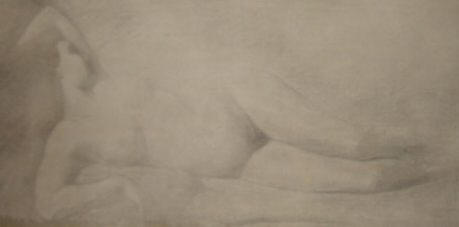Ernest Amas (Landrecies 1869
- Landrecies 1959)*
Painter *

Ernest Amas was born in 1869 in a little
Landrecian hamlet named "le Sambreton". On the very
same year, the famous painter Matisse was born in Le
Cateau-Cambrésis, only 10 miles from Landrecies. Both men decided to
devote their lives to fine arts : they first studied in a school in Lille but
then went to Paris.
In Paris, Ernest Amas regularly attended classes
at the prestigious Julian Academy. He enrolled in Paris Fine Arts School (inside
Le Louvre museum) and
became a disciple of the famous French painter Gustave Moreau (1826-1898). The
school gave him a free hand to prepare for an artistic contest in Rome. He
failed, but was awarded the Chenavard Prize twice. After World War I, Ernest
eked out a living in Paris as a portraitist. His works had a lot of success
among Paris upper classes, and he became an important member of the French
Artists' Salon. Besides, he also got the Rosa-Bonheur Prize in 1921.
 mmm
mmm
In spite of his successes in Paris, Ernest Amas
never forgot Landrecies, his native town. He went back there to spend the last
years of his life, and retired to his quiet little house of Le Sambreton hamlet,
occasionally painting animals for local and undemanding customers. He died there
in 1959.

Today, of course, the fame of Amas suffers a lot
from the proximity of Matisse's birthplace. He didn't become as famous as his
prestigious neighbor because he was a little too attached to what his masters
had taught him, without experiencing different methods by himself. Yet, as you
can see on these samples, Amas was undeniably talented : he really did know how
to make people and animals look surprisingly real. Some of his works are
accessible in Landrecies Town Hall (Self-Portrait,
Marguerite Grumiau, Benoîte's Laundry, Sheep...), in
the church (St-Sebastian Rescued by Two Holy
Women) and in the houses of a lot of Landrecians for whom he worked.


 mmm
mmm
